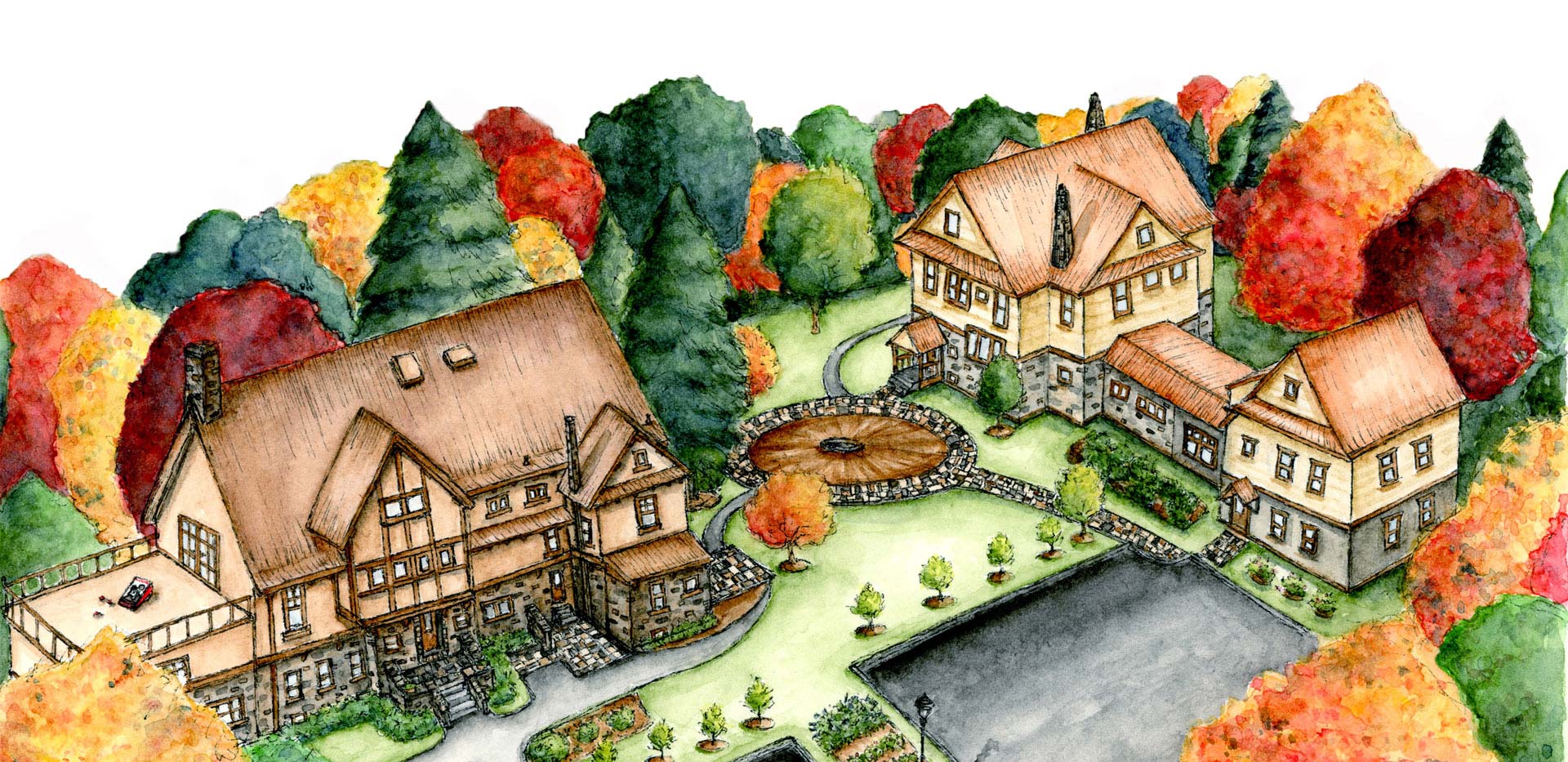
Ostensibly, your college education is about acquiring knowledge and skills to help you get a job and to live life well. It does that, of course. But as all students know, the college years are defined as much as anything else by the quest for friendships that are deep, satisfying, and enduring.
This “college experience” is a somewhat modern phenomenon. In ages past, most people traveled less, didn’t go to school for so long, and married younger. Friendship needs were met largely through rootedness in family and community. Today, in a world of social and geographic mobility, extended schooling, and later marriage, friendship is a little more complicated. Suddenly landing on a campus with thousands of peers and potential friends one has never before met entails both great disorientation and great opportunity. For all its benefits, there is one weird side effect of the modern college experience: the compartmentalization of learning and living.
Contrary to the image of students staying up until all hours debating politics, religion, and the meaning of life, academic life at the modern university too often becomes a duty, like a 9-to-5 job, after which one unwinds to “get away from it all.” The classroom and the dorm thus become divorced and dichotomous, analogous to work vs. play, duty vs. desire, obligation vs. discretion, perhaps even slavery vs. freedom. This explains, in part, why social life in college often resembles a kind of carnivalesque release or “licensed transgression.” It also explains how learning came to be understood as un-fun.
This is ironic, given that the English word “school” is derived from the Greek word “schole,” which means leisure. That transformation is a long story, but suffice it to say, college life does not generally embody a deeply relational epistemology. Where does that leave you? Will you put learning before living? Living before learning? Or will you strive to find some semblance of balance, or possibly even integration?
———-
This week’s New York Times has an interesting article featuring Cornell on the movement toward living-learning residence halls. It is a good trend.
As an undergraduate at Cornell, I recall visiting friends at Harvard, Yale, and Princeton, and thinking that their residential college system–based on the English model–was far superior to the cinder block barracks of “U-Hall 3.” We had Telluride House, of course, but that was for nerds. What didn’t occur to me at the time was that the segregation of good students into one house inadvertently reinforces the norm that caring about the world and wanting to talk about it over dinner was abnormal. Cornell has recently torn down six of those WWII-era “halls” and invested hundreds of millions of dollars in new “houses.” Faculty live in them and lectures take place in them.
The goal of this movement, as the Times puts it, is “the fusion of academic and residential life.” President Emeritus Hunter Rawlings, for example, was concerned about addressing the schizophrenia of hard work and hard partying. “It had become clear,” adds Vice Provost Isaac Kramnick, “that there was a 4:30 p.m. cutoff at the university, after which many students entered an intellect-free zone.” Putting it all in a broader perspective, the Timesalso quotes Will Willimon and Tom Naylor (The Abandoned Generations: Rethinking Higher Education) to the effect that lax parenting and social permissiveness combined with faculty focus on research and disengagement from student life resulted in a campus culture characterized by “substance abuse, indolence and excessive careerism.” All of this resulted in what the Times aptly calls “the marginalization of undergraduates.”
———-
The Times does not mention that Willimon and Naylor are devout Christian scholars. That is not necessary to mention, of course, but I do think it is good and right for Christians to be thinking seriously about the relationship of living to learning, of friendship to knowledge.
The universal longing for friendship, as testified in virtually all of the world’s art, music, literature, and film, suggests that reality is deeply relational in structure. What are we to make of this? The relational structure of Creation, Scripture suggests, reflects the relational structure of the Creator. God himself is revealed as three persons in perfect community. Given that human persons are created in the image of God, it then comes as no surprise that, according to the opening chapters of the Hebrew Scriptures (the “Old Testament”), the one unfulfilled desire and deep longing that preceded sin was the longing for relationship. The longing for friendship, it turns out, is more fundamental and fundamentally different than the longing for money, power, status, control, or even sex.
Speaking of sex, it is neither a coincidence nor a joke that “to know” (in the biblical sense) refers to intercourse. Intercourse is the deepest way of knowing another, but it is not altogether different from other ways of knowing. In fact, it illustrates what is true of knowledge more generally–namely, that all knowledge (contra DesCartes) is relational and embodied. The analogy may be rough, in both senses of the word, but true discourse, like intercourse, entails hospitality, vulnerability, and the blurring of boundaries. Of course, the boundaries of our person must be managed so that we are neither impermeable nor overly porous. As C.S. Lewis put it in the introduction to Pilgrim’s Regress, we are called to steer a middle course between crustaceans and jellyfish.
When we see that knowledge and friendship go hand in hand, it helps us navigate the seemingly competing claims of living and learning. Believe it or not, academic life and stewardship of the mind can actually be enjoyable, especially in community. And social life can (and should) include “serious” conversation. Expressing care and concern about the world over dinner may be mildly countercultural, but it need not be dismissed as nerdy. Calvin Seerveld referred to this as “tensed leisure,” and there is a compelling depiction of the ideal in an obscure documentary entitled “Arguing the World.” Living-learning houses such as those being built at Cornell are a good step in the direction of rendering tensed leisure normal.
One last thing. Residential initiatives such as those at Cornell may be modeled after the English college system, but there is one big difference. The English college system includes religious residences nestled within the larger pluralistic environment. Whether we should have something like that at Cornell or not is rather beside the point; we don’t, and we are not going to anytime soon. And that is, in part, the ecological niche that Chesterton House is here to fill. How do you unwind on a Friday afternoon without entering an intellectual freeze zone? Where do go to find friends who, like you, want to talk about the things that matter most? Friends with whom you can enjoy a good argument as if it were a good game of chess? We do not (yet) have the resources for a faith-based residence hall such as Westminster House in Berkeley or Pres House in Madison, but we do have some very fine discussion groups that meet to talk about important things in a spirit of tensed leisure.
For those who are interested, I will be elaborating on the theme of spiritual friendship at the first Cornell Christian Fellowship meeting, Friday, August 24th, 7:30pm, in HEC auditorium, Goldwin Smith Hall.

